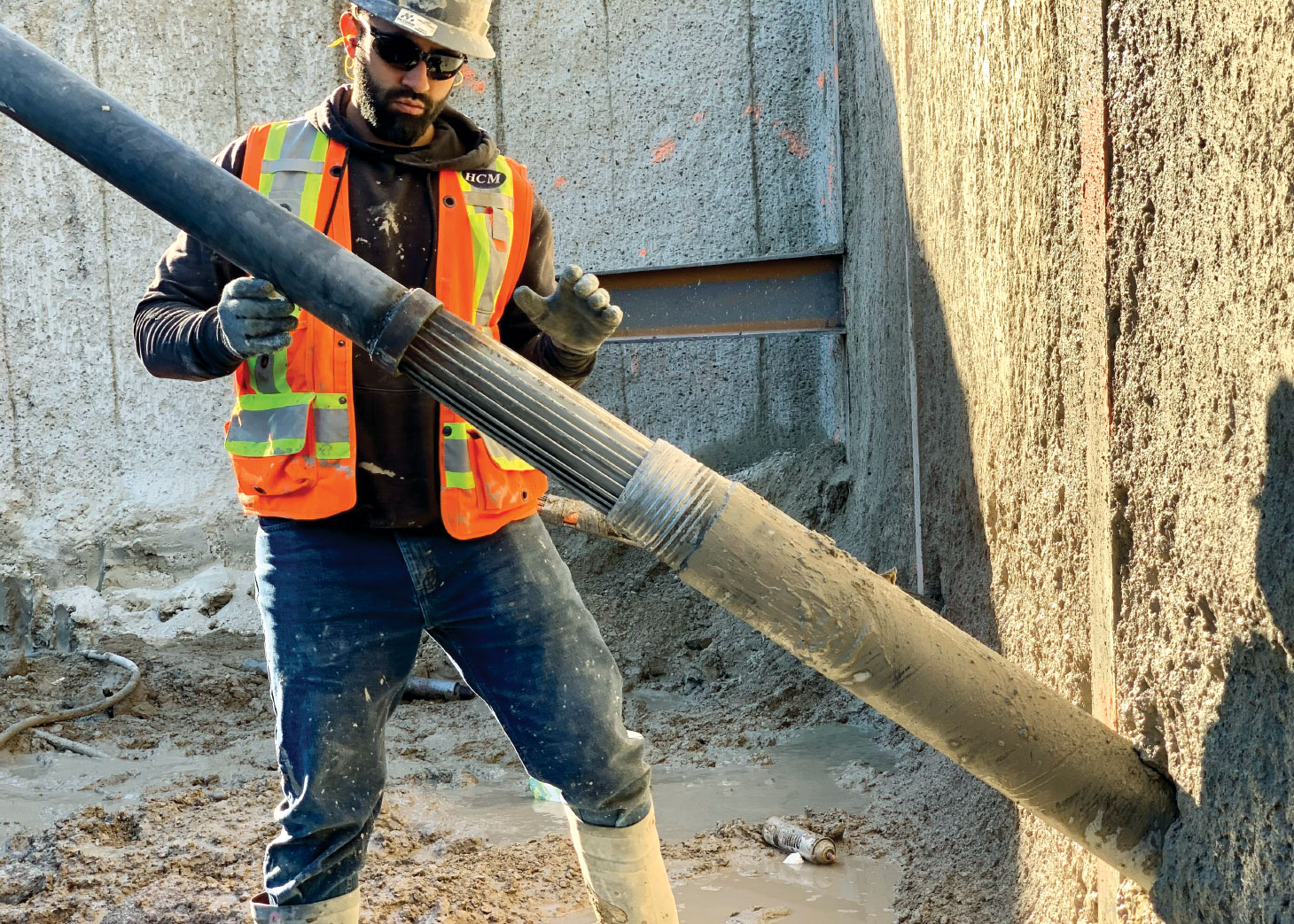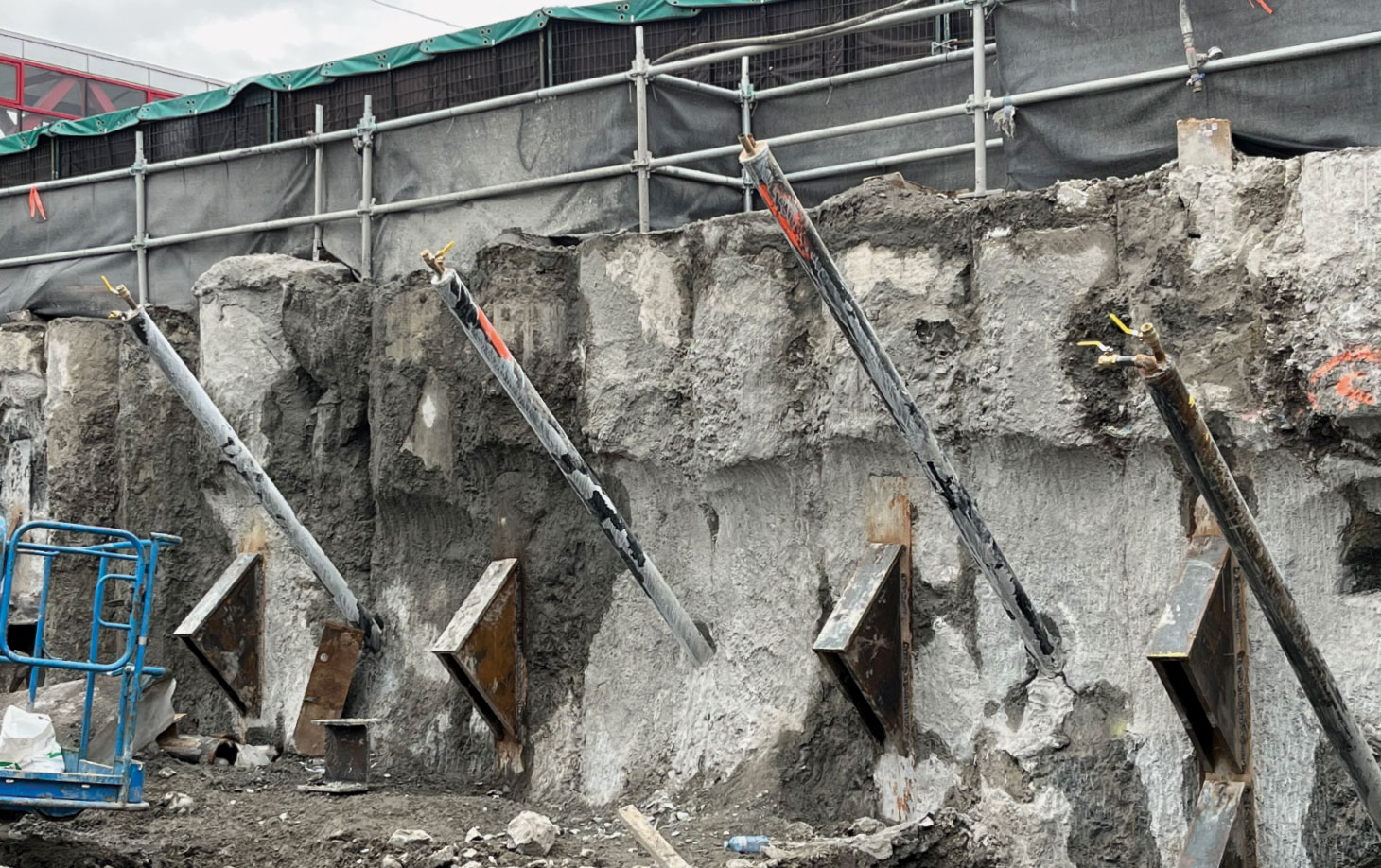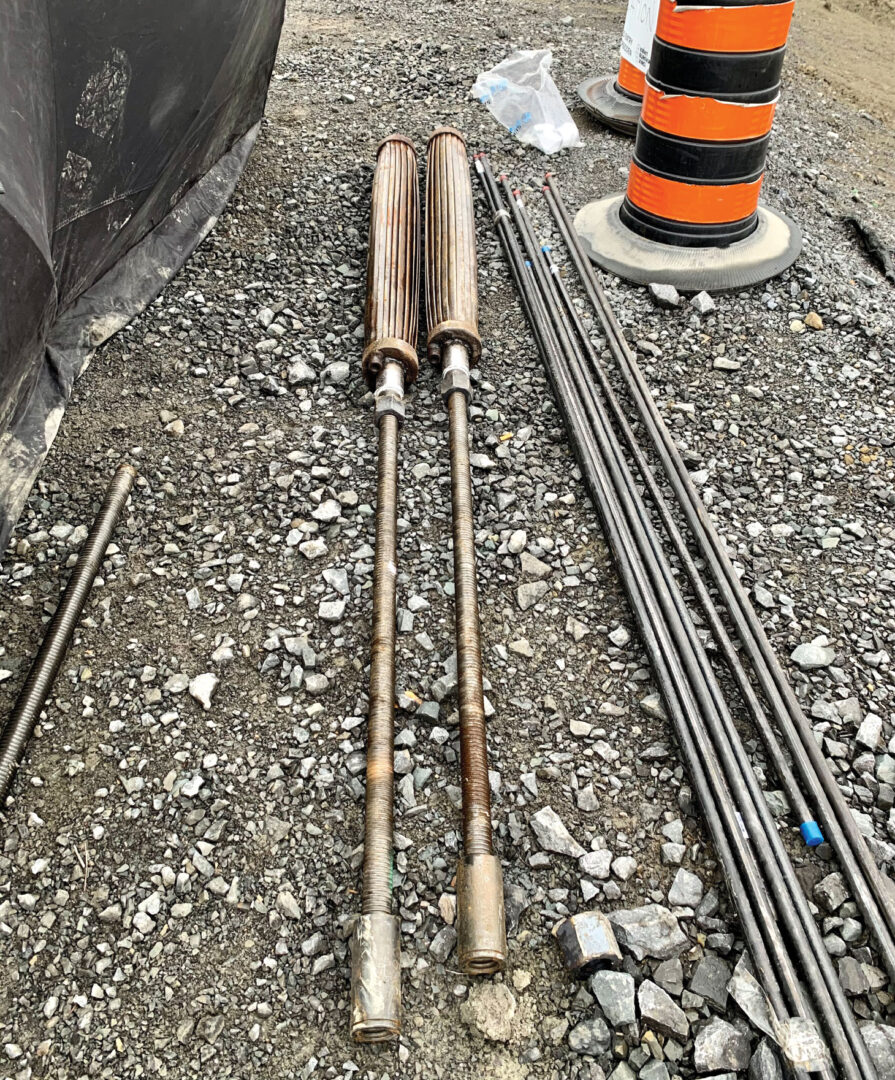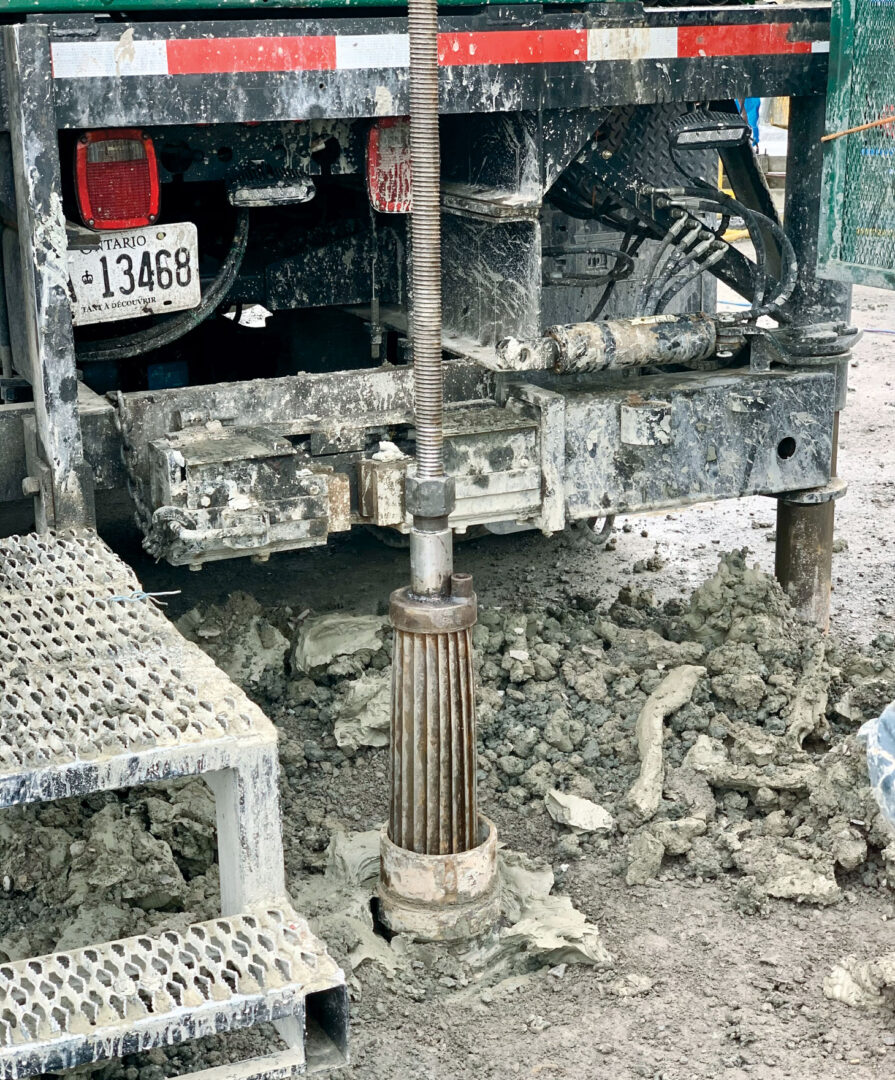
Expander Body (EB), the multi-faceted technology revolutionizing deep foundation engineering worldwide, is now available and operating in Canada and the U.S. This one-of-a-kind technological system maximizes efficiency for deep foundations and shoring projects.
“Expander Body technology is of significant value to all projects using piles, micropiles, tiebacks and anchors,” said Richard Heringer, general manager and vice president of sales at Expander Body International (EBI). “In almost all soil types, this technology advances efficiencies, improving capacity dramatically for projects, including retaining walls, shoring, ground stabilization, tunnelling, buoyancy control and more.
“It was initially invented in Sweden in the 1980s and evolved into a superior solution for foundations under the expertise of one of our board members, Mario H. Terceros (professor and geotechnical engineer at the University of Santa Cruz in Bolivia). Since then, it’s been used for 210 projects internationally with exceptional success.”
How it works
Initially, the EB resembles a 1.2-metre tube of thin pleated steel sleeves attached to a traditional pile or tie-back system. “It is inserted into the soil where needed in any direction (even upside down) to the required depth calculated according to the geotechnical data and where we’ve seen we can capture capacity,” said Heringer. “We then pump in liquid grout under pressure, inflating the (EB).”
Unlike traditional piling, every EB installed allows for reliable quality control and verification of performance during installation in real time by continuously monitoring the pumping pressure and pumped volume of grout.

“If the EB is installed as a pile, once it’s inflated, cement (grout) is injected through the balloon and into the toe beneath the unit. This preloads the soil through our unit, resulting in little to no settlement when the foundation is loaded.”
Heringer says that using EB technology improves workload efficiency, foundation security and cost reductions, typically significantly shortening the length and diameter of friction piles and tiebacks.
“EB technology improves piles and tieback capacities usually by two or three times for piles and even more for tiebacks. In a recent project preliminary design proposal in eastern Ontario, using EB technology demonstrated the ability to reduce the diameter of the piles from 30 inches to 24 inches and the drilled depth required from 40 metres to 21 metres per pile,” Heringer said.
“Based on the 100 piles forecast for the project, this predicted a savings of $1.4 million. Shallower installations and smaller diameter piles save substantial labour-related time, equipment and operational expenses, maximizing deep foundation (return on investment) for project owners, design builders, foundation contractors and reducing risk for engineering firms (liability).”
The Ottawa LRT Project
Recently, the EB system proved its worth in the ongoing Ottawa LRT Project. In April 2019, Kiewit, as part of the East-West Connectors consortium (Kiewit-Eurovia-Vinci), was awarded Stage 2 of the project with Kiewit and Vinci completing construction services and WSP Canada Inc. and Hatch Ltd. for design engineering. This is a considerable project, with Phase 2 CLE alone covering a 27-kilometre LRT extension and 16 new stations.
Hicham (Sam) Salem, principal and design engineering lead at Scientific Applied Concepts Ltd. (SACL), became involved in the project when the design requirements for shoring supports couldn’t be met using standard post-grouted anchors.
“EB technology improves piles and tieback capacities usually by two or three times for piles and even more for tiebacks.”
Richard Heringer, Expander Body International
“We explained the EB product to the general contractor and the piling contractor,” said Salem. “They had designed shoring for an excavation in the west end, but test anchors didn’t deliver the required capacity. Two test EB anchors were installed at our suggested seven metres, and three standard post-grouted test anchors were even deeper than before, up to 28 metres. The traditional anchors still fell substantially short of the targets, while the EB anchors met the needed capacity at a depth of only seven metres. The decision was made to utilize the EB anchors for the excavation.”
The companies involved in this project published a conference paper for this comparative test that was presented at GeoSaskatoon2023 in October, titled “Performance Evaluation of Standard Grouted Anchors Versus Expanded Anchors” by Mudasser Noor (SACL), Salem (SACL), Hamid Batenipour (Kiewit Engineering Group) and Troy Skinner (Marathon Underground Construction Corporation).
Batenipour says the LRT station needed complex shoring to excavate and open the area. Rather than the much longer traditional tiebacks, the EB system allowed them to compete on the project.
We installed 29 EB tiebacks for a temporary shoring system. We did have to go back and modify the excavation, removing some of the soil to make a lower elevation for a crane pad, which meant the loading wouldn’t work for two of the EB anchors, but other than that, the system worked very well,” he said.
Heringer says that the client, Kiewit and Marathon Underground Constructors Corp., needed a range of capacities of 1,400 kilonewtons (kN) for those anchors. Three traditional systems, including 10-strand cable to a depth of up to 28 metres or more, failed capacity needs (below 600 kN).
“(The EB 612) achieved 1,200 kN and (the EB 812 achieved) 1,400 kN at seven metres. That is a drilling savings of 24 metres (for each of the 29 tiebacks). These savings do not include time, labour, material or equipment, and (the products) are now being adopted as a potential solution for the balance of Phase 2 and Phase 3 of this major multibillion-dollar project,” said Heringer.
“We are a Canadian company, and our board of advisors and associates consists of deep foundation experts featuring world-recognized expert Bengt H. Fellenius, PhD. Wherever there is a deep foundation, EB technology is a potential solution. It all depends on the type of application and soil conditions, but what we say to clients is to send us the information. We’ll look at it at no charge and tell you whether our technology will work. We don’t claim to be a solution to every project, but want to provide better (return on investment) for everyone involved.”
There are hundreds of successful major international projects that used EB technology. With the recent completion of several successful projects in the U.S. and Canada, the EB system is quickly gaining recognition and acceptance in North America. ![]()

